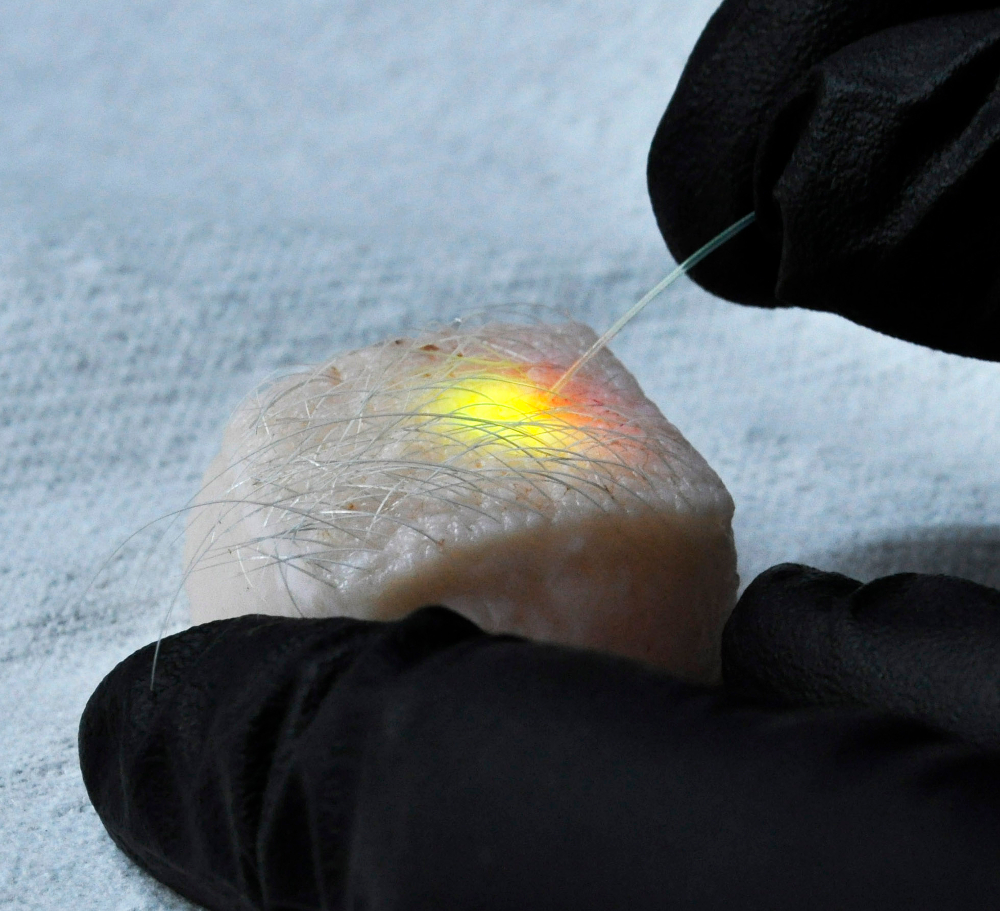The short history of cell lasers goes back to 2011, when physicists Dr Malte Gather and Professor Seok-Hyun Yun of Harvard Medical School, US, engineered human cells to make them express a fluorescent protein, and placed them between a pair of tiny mirrors.
When the scientists pumped the cells with a blue laser, the cells re-emitted the light as green. This light reflected back and forth between the mirrors to form a coherent beam, just like a normal laser.
However, those cell lasers had limited application, given that they needed external mirrors to function. The trick has been to find a way of getting a pair of mirrors, or some other resonant cavity, inside the cells themselves.
Physicist Dr Matjaž Humar was awarded an EU grant to work with Prof. Yun at Harvard Medical School to solve this problem. His answer has been to inject cells with droplets of oil dyed with a fluorescent compound which act as resonant cavities to reflect the light.
“‘You could almost tag the total number of cells in the human body.’
This is the same phenomenon that underlies the hemispherical ‘whispering galleries’ sometimes seen in cathedrals, libraries and other old buildings, in which a whisper can be heard far away by echoing around the gallery’s circumference. Because of the droplets’ spherical shape, any light generated by the fluorescent dye likewise resonates around, ultimately generating a coherent laser beam.
With this current technology, it is thought a few thousand cells can be fashioned into lasers and barcoded. But the researchers believe that as the cell lasers get more complex, the number of individual barcodes could go into the hundreds of thousands or more – far exceeding any current method of medical tagging.
‘You could almost reach the total number of cells in the human body,’ said Dr Humar. ‘In principle, there could be that many combinations.’
Dr Humar and Prof. Yun are not the only ones to have made standalone cell lasers. Backed by a grant from the EU's European Research Council, and now a professor at the University of St Andrews in the UK, Prof. Yun’s previous colleague Prof. Gather has worked with others to make cells ‘eat up’ micro-beads, rather than oil droplets, by a natural process called endocytosis.
Unique colour
Like the oil droplets, the micro-beads resonate inside the cells to generate laser light. But the real boon with both groups’ cell lasers is the unique colour of their light – unique like a barcode – which is provided by subtle variations in the size of the beads or droplets.
The researchers say that, in theory, certain cells could be made into lasers inside the human body. A while later, a scientist armed with a spectrometer – a device that can discern subtly different colours of light – could scan the human subject to find out where the cells had gone.
Dr Gather believes this could help biologists understand the spread of tumours to different parts of the body. Such metastasis is believed to occur when tumour cells break away from the main tumour, but no-one is clear what subsequently happens to them.
‘The only way you could find out would be to track every cell that detaches from the tumour,’ said Dr Gather. This, he adds, might become possible with cell barcoding.
Other biological processes, such as immune response and morphogenesis – that is, how an organism develops its shape – could also be investigated with the cell lasers, he says.
Dr Gather and his colleagues have already got several different types of cell to take up the micro-beads to form lasers. The next step will be to make the micro-beads compatible with all cells, so that the barcoding technique is universal.
‘Provided we can confirm the technique is generally applicable, I believe cell laser-based barcoding has a very good chance of becoming a new standard method in in-vivo microscopy,’ said Prof. Gather. ‘We are keen to now explore in detail how it performs in complex biological environments.’





